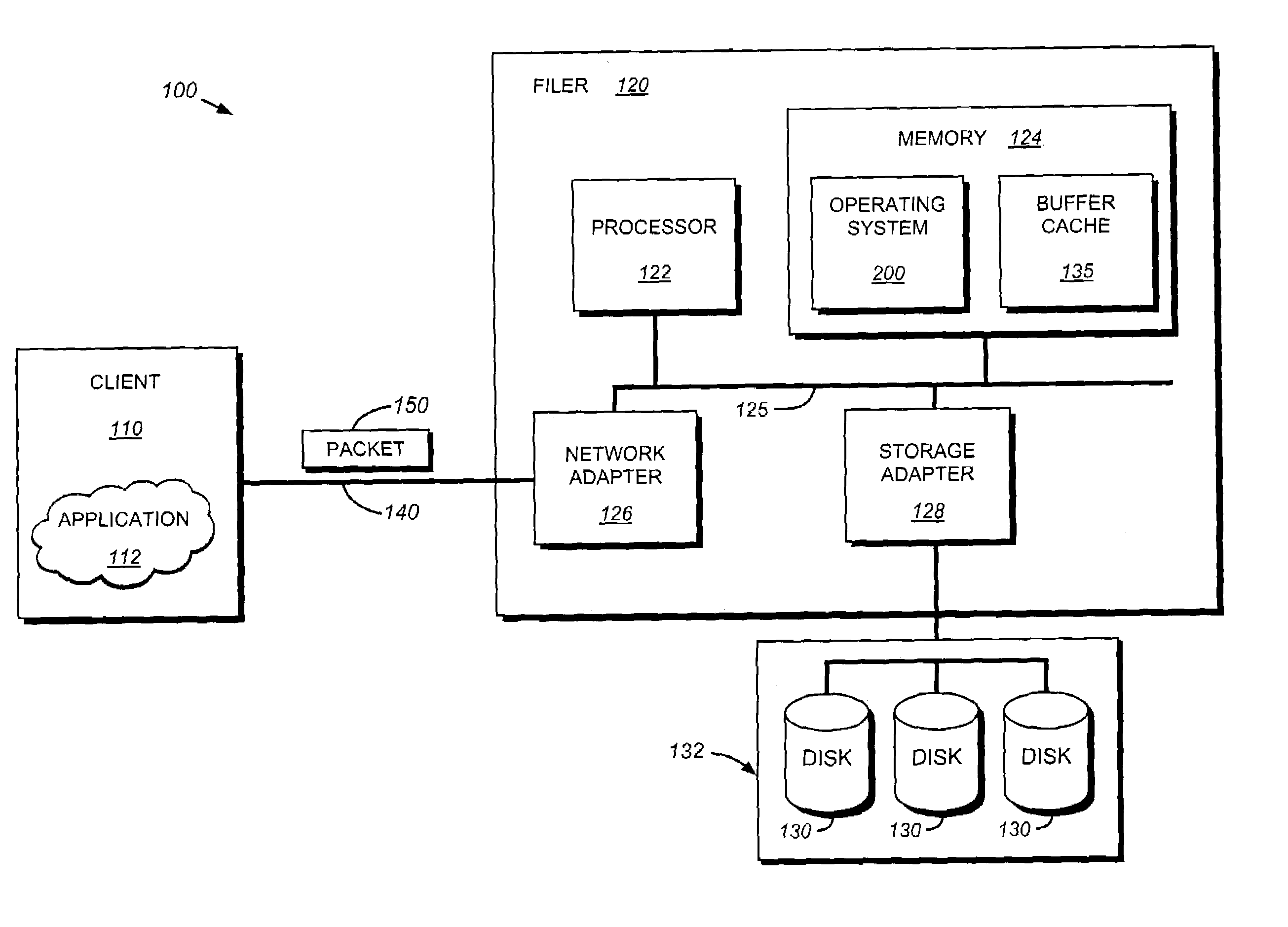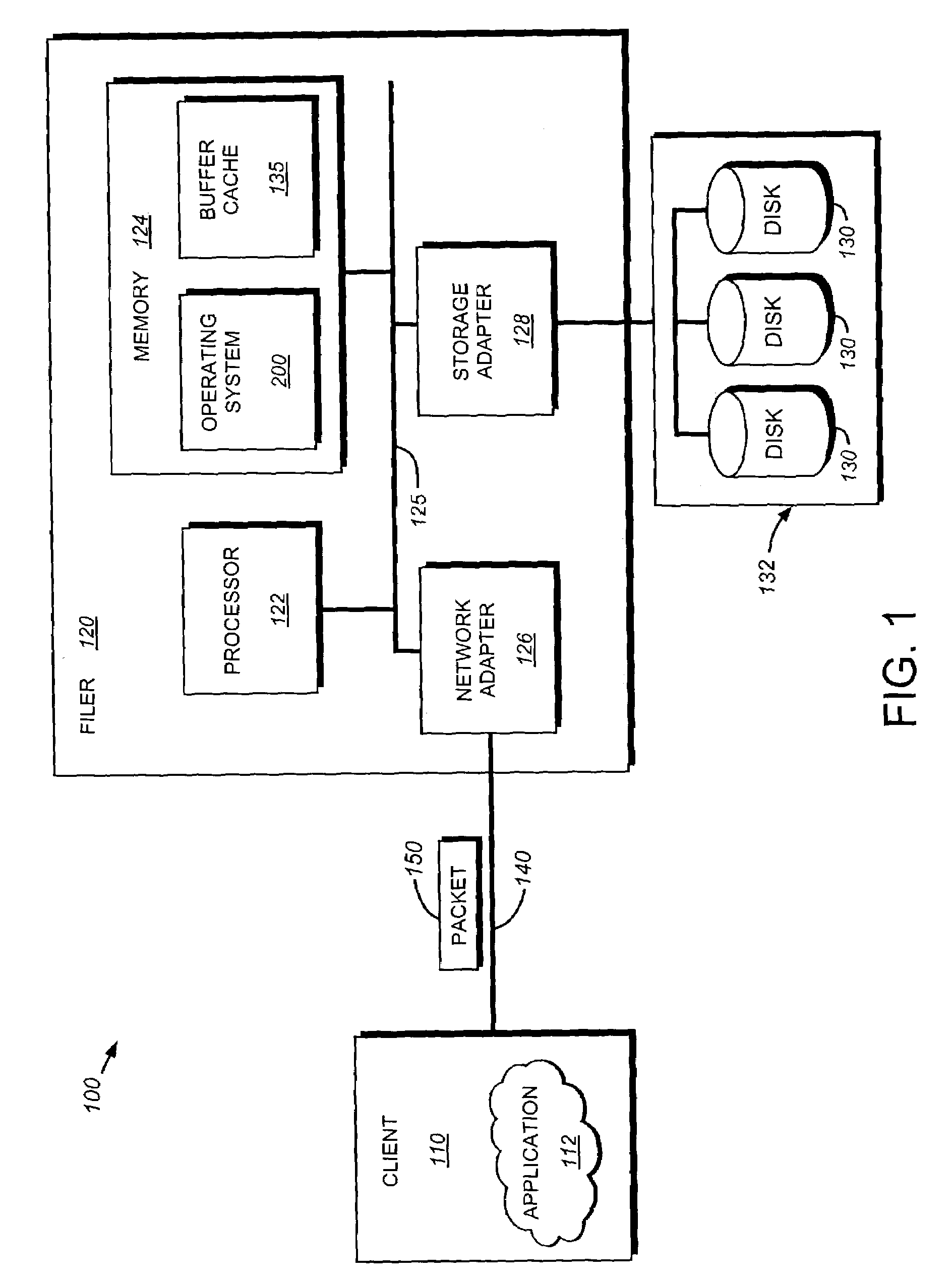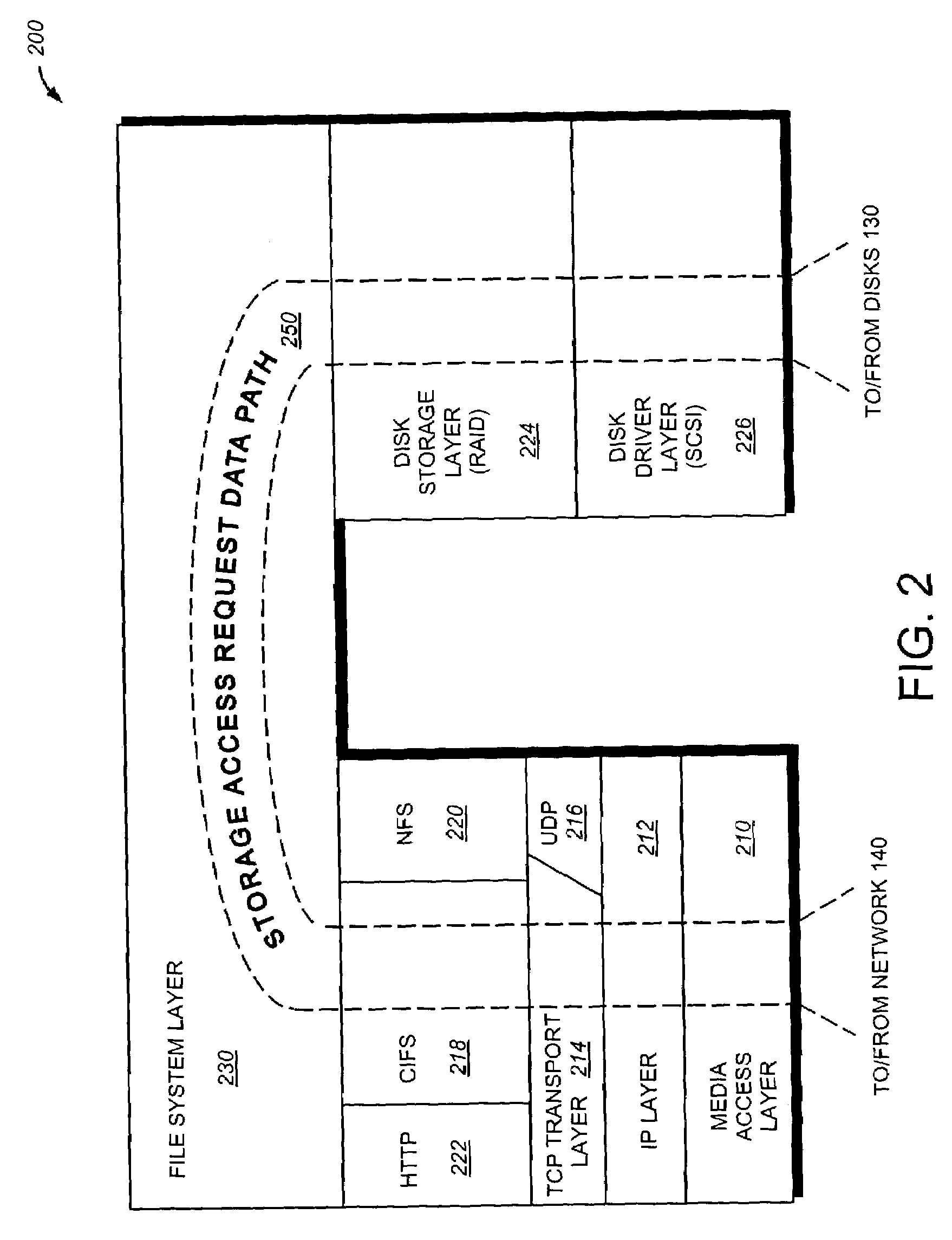Zero copy writes through use of mbufs
a file system and zero copy technology, applied in the field of file systems, can solve the problems of consuming system resources, consuming a lot of memory, and consuming write operations, so as to achieve the effect of reducing system memory usag
- Summary
- Abstract
- Description
- Claims
- Application Information
AI Technical Summary
Benefits of technology
Problems solved by technology
Method used
Image
Examples
Embodiment Construction
A. Storage System Environment
[0028]FIG. 1 is a schematic block diagram of a storage system environment 100 that includes a client 110 having one or more applications 112, and an interconnected file server 120 that may be advantageously used with the present invention. The filer server or “filer”120 is a computer that provides file service relating to the organization of information on storage devices, such as disks 130. It will be understood to those skilled in the art that the inventive technique described herein may apply to any type of special-purpose computer (e.g., server) or general-purpose computer, including a standalone computer. The filer 120 comprises a processor 122, a memory 124, a network adapter 126 and a storage adapter 128 interconnected by a system bus 125. The filer 120 also includes a storage operating system 200 that implements a file system to logically organize the information as a hierarchical structure of directories and files on the disks.
[0029]It will be u...
PUM
 Login to View More
Login to View More Abstract
Description
Claims
Application Information
 Login to View More
Login to View More - R&D
- Intellectual Property
- Life Sciences
- Materials
- Tech Scout
- Unparalleled Data Quality
- Higher Quality Content
- 60% Fewer Hallucinations
Browse by: Latest US Patents, China's latest patents, Technical Efficacy Thesaurus, Application Domain, Technology Topic, Popular Technical Reports.
© 2025 PatSnap. All rights reserved.Legal|Privacy policy|Modern Slavery Act Transparency Statement|Sitemap|About US| Contact US: help@patsnap.com



